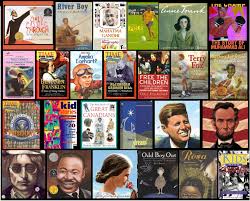Languages are culture
The mind is full of pious nectar which are words. The body is supposed to be pleasing the three worlds by successive obligations, always making a mountain of others virtue, by developing it in one’s own heart, how many good people of such kind are there? All Sanskrit quotes have a spectacular and striking meaning to them, and one can’t draw the meaning easily. Hence, Sanskrit is considered to be a mother of all languages.
Language, more than anything else, is what makes us human. It appears that no communication system of equivalent power exists elsewhere in the animal kingdom. Any normal human child will learn a language based on rather sparse data in the surrounding world, while even the brightest chimpanzee, exposed to the same environment, will not. Why not? How, and why, did language evolve in our species and not in others? Since Darwin’s theory of evolution, questions about the origin of language have generated a rapidly-growing scientific literature, stretched across a number of disciplines, much of it directed at specialist audiences. The diversity of perspectives – from linguistics, anthropology, speech science, genetics, neuroscience and evolutionary biology – can be bewildering.
Having learnt Sanskrit in school, and putting an end to Sanskrit Education there, this quote which I had learnt by heart, just rolls up in my mind, and makes me wonder gravely about the evolution of language. Too great a term it is ‘Evolution of Language’. But, really how? How can we just profoundly express our thoughts, notions, feelings, gestures and everything through a medium of channelized, abstract ‘sounds’ we clarify as words, going deep into their structure classifying them as verbs ,adverbs, adjectives, nouns, figures, and what more?!.
It is usually said that the when we learn to speak, the structure of the letter that are about to speak, (in mother tongue) emerges in the form of air all the way from rib-structure of the body and hence takes the form of the letter. For example, if we are going to pronounce the Marathi or Hindi letter “ka”, the structure of the letter before we pronounce it is formed in our spine so the air circulates according to structure of the letter we are about to speak and hence we are able to speak it correctly. The reason behind Sanskrit being called as a pure language is that, it is mostly about good humour and skill of perfection in your pronunciations, so the pronunciations being difficult, one in itself becomes pure from within due to the circulation of untainted and wholesome air and hence, the legend of holy Sanskrit Language!
As the resources say, in their paper “Natural Language and Natural Selection,” researchers Steven Pinker and Paul Bloom theorize that a series of calls or gestures evolved over time into combinations, giving us complex communication, or language. As things became more complicated around them, humans needed a more complex system to convey information to one another. Think of it like this: Early man sees a group of deer he wants to hunt. He grunts a sound to his hunting partner that means “deer are nearby.” One day, a storm comes in and the hunter notices that thunder scares the deer away. As a result, the hunter goes hungry until the storm passes. Over time, the same hunter also learns to recognize the warning signs for bad weather — dark skies and increased wind. Early man realizes that when the sky darkens and the wind picks up, he needs to tell his hunting partner to speed up the pursuit of the deer. Therefore, he comes up with a series of grunts that reference both the deer and the bad weather. That series of grunts was the beginning of an evolutionary adaptation that eventually became language. As humans learned more about how to best survive, they developed a need to communicate these survival methods to their population. And that’s the adaptation theory in a nutshell. Others in this intellectual camp — hold that language evolved not from primate communication but from primate cognition, which is significantly more complex. Those who see language as a socially learned tool of communication, such as Michael Tomasello, see it developing from the cognitively controlled aspects of primate communication, these being mostly gestural as opposed to vocal. Where vocal precursors are concerned, many continuity theorists envisage language evolving from early human capacities for song.
Around 5000 BC, between the Danube river valley and the steppes of what is now the Ukraine, there lived small tribes of primitive farmers who all spoke the same language. They cultivated rye and oats, and kept pigs, geese, and cows. They would soon become the first people on earth to tame the local wild horses — an accomplishment that would make them a significant part of history for thousands of years to come. And their proximity to the culturally more advance people of Asia Minor — what is now Turkey — would allow them to learn the metal working invented there, beginning with copper.
Beginning around 3000 BC, these people would spread into Europe and the Russian steppes. Around 1500 BC, they would continue into Persia and India, even as far as western China. Later still (in the last 500 years), they would spread to the Americas, Australia, the Pacific islands, and parts of Africa. They would take their language with them, although it would gradually change into hundreds of mutually unintelligible languages, including English, German, French, Spanish, Russian, Persian, Hindi and many more.By examining the oldest examples of modern and classical languages such as Greek, Latin, and Sanskrit, linguists have been able to reconstruct an educated guess as to what the language of these ancient people was like. They call the language Proto-Indo-European. The work that went into reconstructing Proto-Indo-European has led to efforts to reconstruct other pre-historical language ancestors as well.
To show you how these linguists did this, let’s start with a simple example: Italian, Spanish, Portuguese, French, and Rumanian all come from Latin, which we still have many records of. Words with -ct- in the middle in Latin changed in a systematic way, like this:
Latin Italian Spanish Portuguese French English
dicto detto dicho dito dit said
lacte latte leche leite lait milk
lecto letto lecho leito lit bed
nocte notte noche noite nuit night
So one “rule” could be that a “difficult” combination of letters like -ct- change in certain ways to end up “simpler.” In most of the descendent languages, it just became -t-; in Spanish, it became ch. Another example: Words that began with pl-, cl-, or fl- in Latin changed in a systematic way as well. In this case the initial consonant combinations “simplified” in different ways in Italian, Spanish, and Portuguese, but remained the same in French. In Italian, the l became an i, in Spanish they became ll (pronounced like y), and in Portuguese they became ch (pronounced like sh):
Latin Italian Spanish Portuguese French English
pleno pieno lleno cheio plein full
clave chiave llave chave clef key
flamma fiamma llama chama flamme flame
The relationships among the Germanic languages are often obvious, and linguists have reconstructed what they call Proto-Germanic:
English Dutch German Danish Norwegian Swedish Icelandic
book boek buch bog bok bok bók
come komen kommen komme komme komma koma
drink drinken trinken drikke drikke dricka drekka
How lucky are we, to know, understand and battle the languages to get it all spoon fed! Or unlucky perhaps. The evolution of languages must have been such an interesting process. Imagine that the words you speak today, needed so much of construction, transfusion and centuries have gone by to let us get it so deeply. I think this would be one of the reasons to be utterly grateful to being born in
India, for getting us to whack our brains having so many languages of every culture! Finally, a reason to refine culture, isn’t it?




